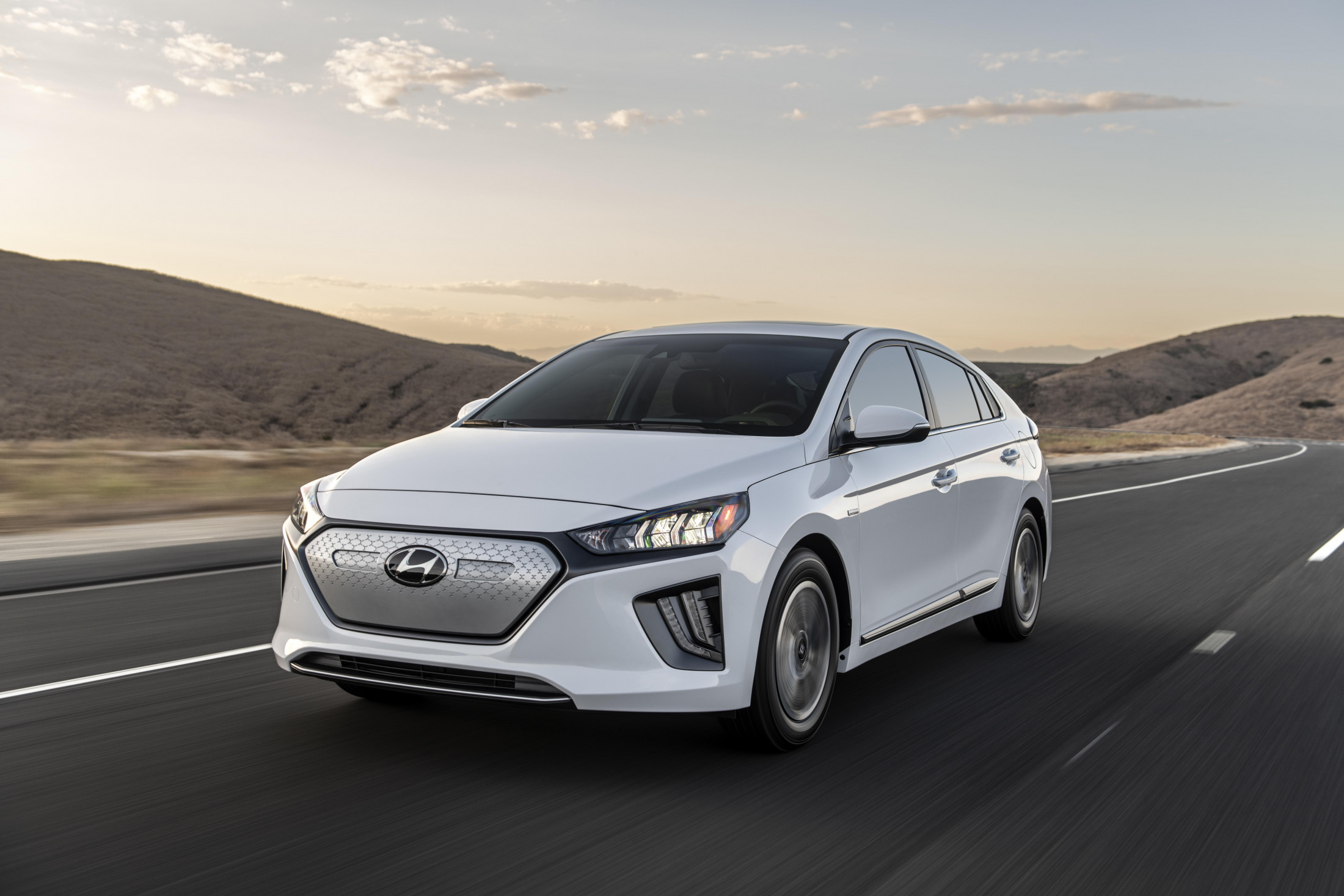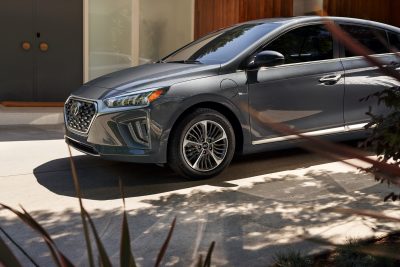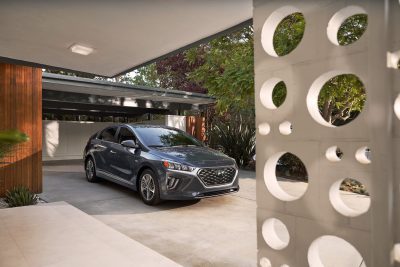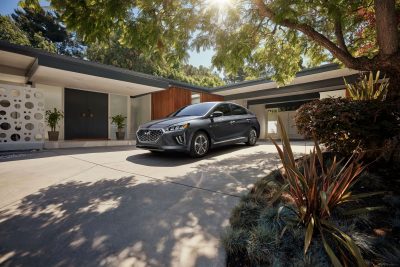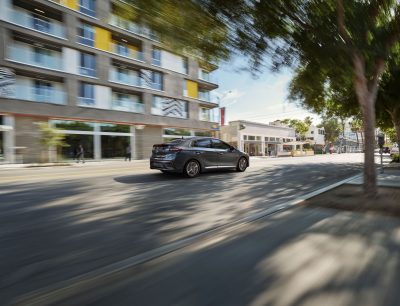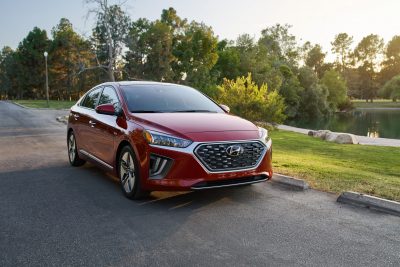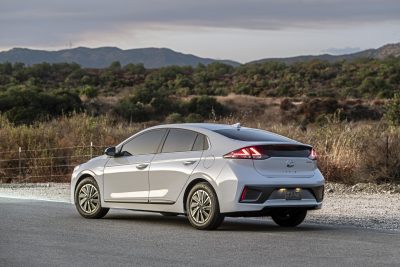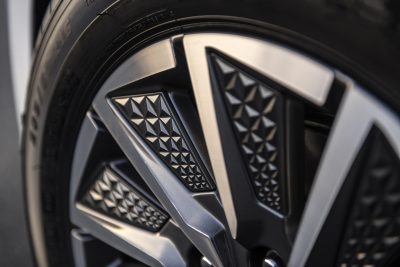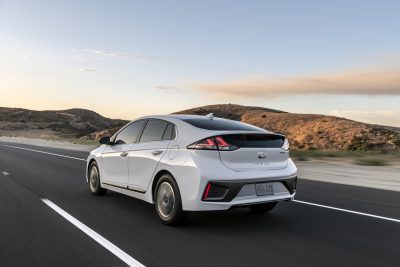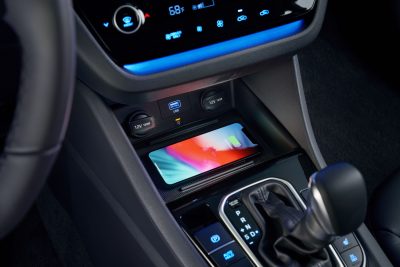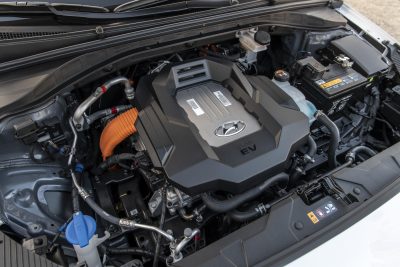Hyundai‘s Ioniq lineup has made quite a splash since it debuted a few years ago. Designed to be a potent Toyota Prius competitor, the Ioniq had plenty of potential, and even mirrored the Prius’s extensive green lineup with a Hybrid, Plug-in Hybrid, and even a pure EV variant all ready to battle against their bitter Japanese rival. But with the battle still swinging in Toyota’s favor, Hyundai has instead chosen to use the opportunity to update the Ioniq for 2021 to help give it a new lease on life, as well as give it several new tricks to help it bring the fight to the Prius.
Contrary to popular belief, this is not an outright redesign, but rather it is a very extensive refresh with both the exterior and the interior benefitting from several key updates. The exterior benefits from a freshening, but you will have to look very closely to see it. All three models benefit from an all new front grille design with the Hybrid and the Plug-in receiving an all new mesh material, while the EV receives a distinctive pattern for its grille-less mug. Other updates include new front and rear fascias, tweaked side sills, new wheel designs, and even new lighting signatures. The interior changes are far more noticeable with an all new upper and lower instrument panel, with an updated dashboard drawing eyes to the 8.0 inch touchscreen infotainment system that comes bundled with Apple CarPlay and Android Auto. This screen is standard across the trio, but the high resolution 7.0 inch LCD console display is only standard on the Electric with the Hybrid and the Plug-in only getting it as an optional extra. Rounding out things are splashes of dark chrome trim that help add a bit of personality and aggression to the Ioniq.
The 2020 Ioniq will also come equipped with Hyundai’s SmartSense technology package that offers forward collision avoidance assistance, high beam assist, and drivers attention warning. Performance hardware has also been updated, but the extent depends on what flavor of Ioniq you go for. The bulk of these changes are found on the Electric, with that model getting a bigger battery for 2020 which grows 36 percent from 28 kWh to 38.3 kWh. This helps increase overall driving range to 170 miles, while also delivering 134 horsepower and 218 lb-ft of torque. This is up from the old model which made 118 horsepower and brought a smaller battery to the festivities. Hyundai also upgrades the on-board battery charger and increases it from 6.6 kW to 7.2. Hyundai claims that when the Electric model is hooked up to a 100-kW fast charging station, it can reach 80 percent charge in as little as 54 minutes. When asked why the Ioniq is unable to match the 200 plus mile driving range wielded by the Kona EV, company reps revealed that it is ultimately due to platform differences between the two, with the Ioniq’s underpinnings being unable to accommodate the Kona’s bigger battery pack.
With all the excitement surrounding the Electric model, Hyundai opted to go for a more modest approach with the Hybrid and Plug-in variants. Both models use the same carryover 1.6 liter four cylinder engine, and they also use the same battery pack too. Output does differ depending on model, with the Hybrid making 139 horsepower and 195 lb-ft of torque. Meanwhile, the Plug-in version makes 156 horsepower, but makes the same amount of torque. The Plug-in also offers up to 29 miles of pure electric driving with both models using the same six speed automatic transmission.
All of these changes do come with an increase in price, with the entry level Ioniq starting at $23,000 which doesn’t include the $930 destination fee, and is a slight increase over the current model’s $22,400 sticker. Meanwhile, the Ioniq Plug-in jumps to $26,300 versus its current $25,350 sticker. Hyundai did not release any pricing for the Ioniq Electric, but the current model starts at $29,815 so we would not be too shocked if the model crosses the $30,000 barrier for the new model year. On that front, since it is marketed as a 2020 model, look for it to appear very soon with more information being revealed closer to its official launch.

Carl Malek has been an automotive journalist for over 10 years. First starting out as a freelance photographer before making the transition to writing during college, his work has appeared on numerous automotive forums as well as websites such as Autoshopper.com.
Carl is also a big fan of British vehicles with the bulk of his devotion going to the Morgan Motor Company as well as offerings from Lotus, MG, and Caterham. When he is not writing about automobiles, Carl enjoys spending time with his family and friends in the Metro Detroit area, as well as spending time with his adorable pets.

